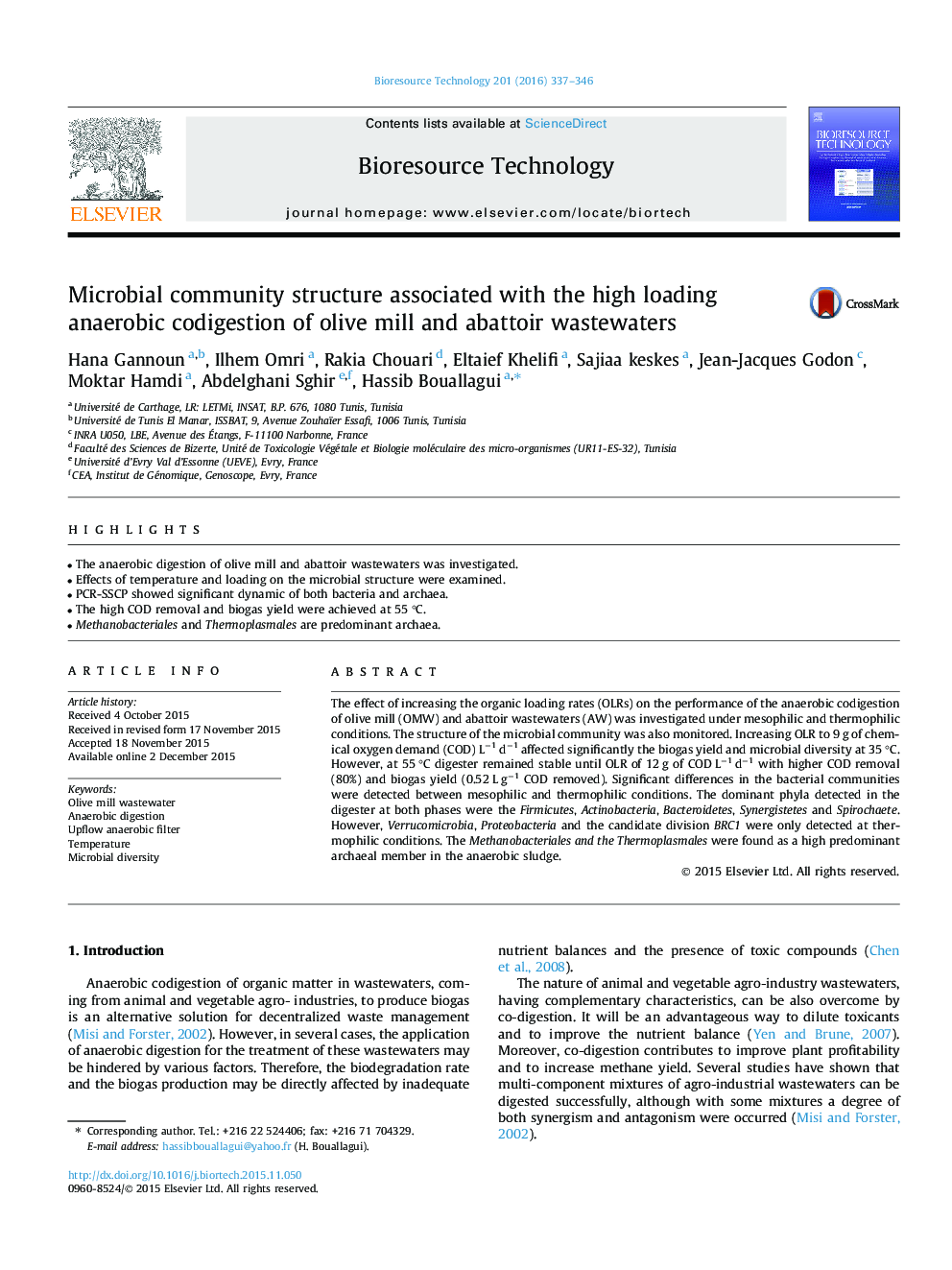| Article ID | Journal | Published Year | Pages | File Type |
|---|---|---|---|---|
| 679366 | Bioresource Technology | 2016 | 10 Pages |
•The anaerobic digestion of olive mill and abattoir wastewaters was investigated.•Effects of temperature and loading on the microbial structure were examined.•PCR-SSCP showed significant dynamic of both bacteria and archaea.•The high COD removal and biogas yield were achieved at 55 °C.•Methanobacteriales and Thermoplasmales are predominant archaea.
The effect of increasing the organic loading rates (OLRs) on the performance of the anaerobic codigestion of olive mill (OMW) and abattoir wastewaters (AW) was investigated under mesophilic and thermophilic conditions. The structure of the microbial community was also monitored. Increasing OLR to 9 g of chemical oxygen demand (COD) L−1 d−1 affected significantly the biogas yield and microbial diversity at 35 °C. However, at 55 °C digester remained stable until OLR of 12 g of COD L−1 d−1 with higher COD removal (80%) and biogas yield (0.52 L g−1 COD removed). Significant differences in the bacterial communities were detected between mesophilic and thermophilic conditions. The dominant phyla detected in the digester at both phases were the Firmicutes, Actinobacteria, Bacteroidetes, Synergistetes and Spirochaete. However, Verrucomicrobia, Proteobacteria and the candidate division BRC1 were only detected at thermophilic conditions. The Methanobacteriales and the Thermoplasmales were found as a high predominant archaeal member in the anaerobic sludge.
